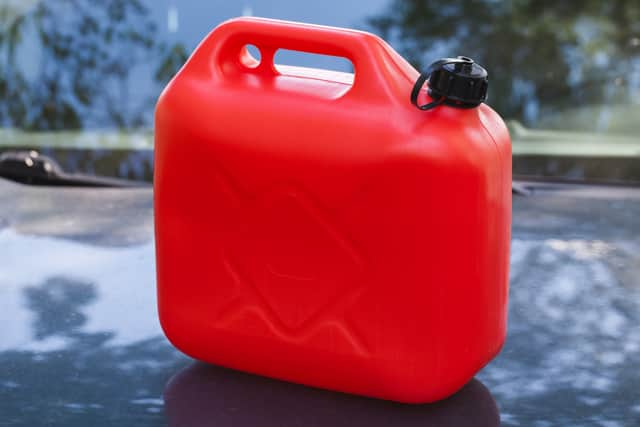Does fuel expire? - How long petrol and diesel last and how to store them safely in cans


The current fuel supply crisis has led to many drivers panic buying petrol and diesel.
Despite retailers and the Government urging drivers to only buy what they need, filling stations in some parts of the country have seen pumps run dry or have been forced to impose spending limits to ration their supply.
Advertisement
Hide AdAdvertisement
Hide AdIn some cases drivers have been seen filling up multiple petrol cans in a bid to horde fuel at home. This means they have a ready supply now, but could leave them facing problems further down the line.
Does petrol go out of date?
Despite being made from crude oil which has lain underground for millions of years, petrol and diesel don’t keep forever and, in fact, have surprisingly short shelf lives.
According to the RAC, petrol generally has a shelf life of around six months if it is stored properly. That means in a tightly sealed container at 20 degrees.
At higher temperatures it degrades more quickly, for instance at 30 degrees it will last for just three months.
Advertisement
Hide AdAdvertisement
Hide AdSimilarly, if the container is poorly sealed, the fuel will degrade more quickly.


In general, diesel will last in a portable can for between six and 12 months before it begins to degrade. Like petrol, however, how it is stored can affect its longevity.
Degradation happens because different chemical elements of the fuel evaporate at different rates, meaning the fuel’s chemical composition changes over time. As some chemicals evaporate, others react with oxygen, causing the fuel to go “gummy”.
Will stale fuel damage my car?
In most cases a small amount of stale fuel is unlikely to cause significant problems. If you’ve used stale fuel or suspect the fuel in your car’s tank may have gone off, it’s best to fill up with fresh petrol or diesel.
Advertisement
Hide AdAdvertisement
Hide AdHowever, the older the fuel, the worse the degradation and potential for problems, so if the fuel has been sitting in your car’s system for a prolonged period (more than six months) it’s worth having it drained.
If you use petrol that is past its best you might experience poor starting or loss of performance due to the degradation of the fuel.
In more extreme cases where the petrol has oxidised and gone “gummy” it can create solid impurities which can clog up the fuel system and other parts of the engine.
Similarly, diesel which has degraded can cause deposits to form which will block sensitive parts of the fuel system and lead to potentially expensive problems.
Can I store petrol at home?
Advertisement
Hide AdAdvertisement
Hide AdYou can store petrol at home but there are several restrictions on how much petrol you can store at home and where you store it.
The Health and Safety Executive states that private individuals can store up to a total of 30 litres in suitable portable containers or in a single demountable fuel tank.
If you are using a metal petrol can you can store up to 20 litres in one container.
If you are using a plastic fuel can you can store up to 10 litres in one container.
Advertisement
Hide AdAdvertisement
Hide AdIf you are storing the fuel containers in a vehicle you can store no more than 30 litres in no more than two containers.
Any container must be “reasonably robust and not liable to break under the normal conditions of use”, designed to stop the escape of vapour, not liable to degrade due to contact with petrol, and clearly labelled with the words “petrol” and “highly flammable”.
Where should I store petrol?
If you have petrol in jerry or fuel cans you must not store it in living accommodation, so you cannot keep full petrol cans in the house.
However, the HSE states that petrol in cans must be stored within a suitable building.
Advertisement
Hide AdAdvertisement
Hide AdYou can keep them in a garage, shed or other outbuilding as long as it is well ventilated, and there is no nearby source of ignition.
If the space where you are storing the petrol is attached to your house, such as an integrated garage, it must be “fire-separated” from the rest of the building by an external wall or internal wall with fire-resistant internal linings.
Comment Guidelines
National World encourages reader discussion on our stories. User feedback, insights and back-and-forth exchanges add a rich layer of context to reporting. Please review our Community Guidelines before commenting.
